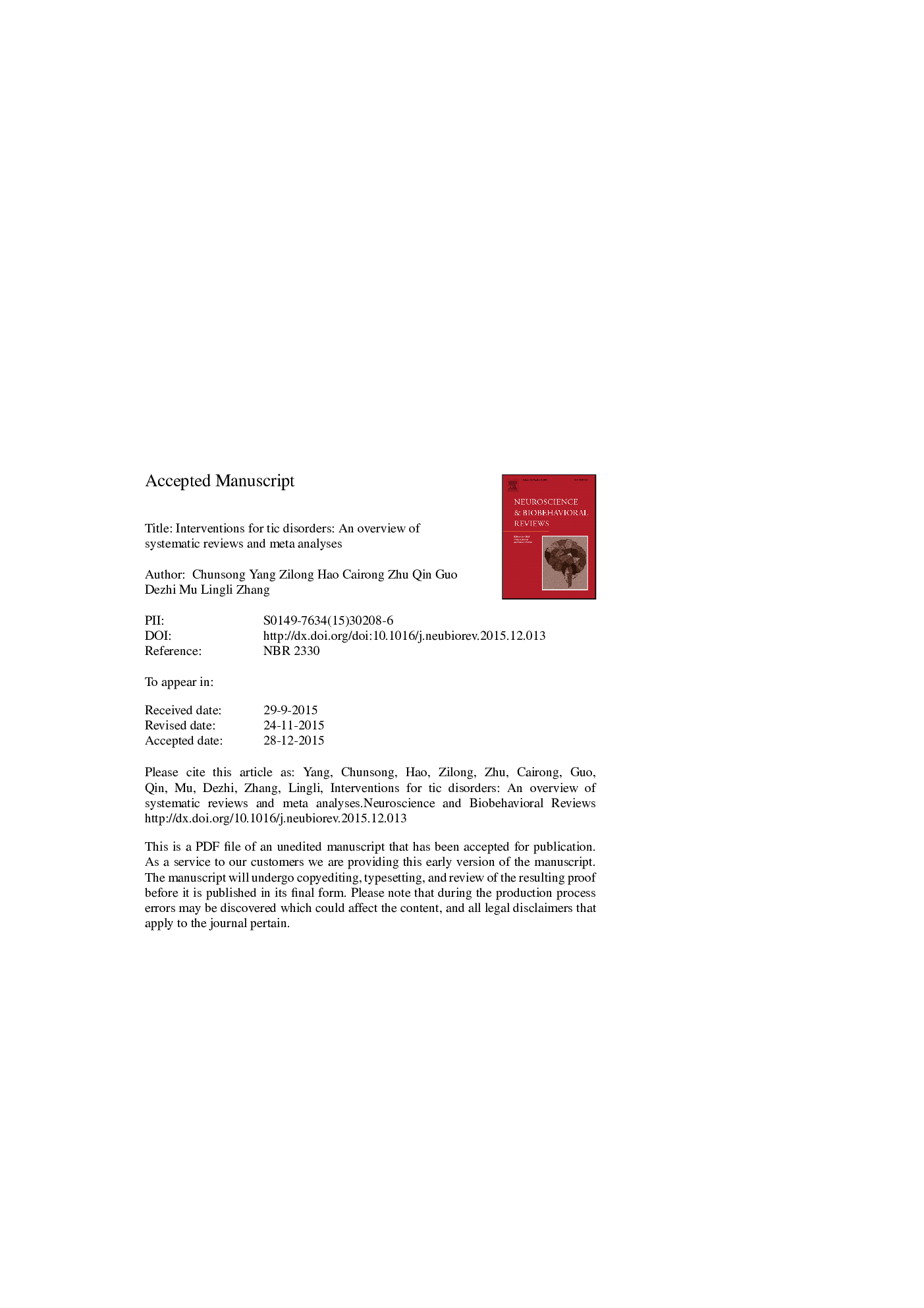| کد مقاله | کد نشریه | سال انتشار | مقاله انگلیسی | نسخه تمام متن |
|---|---|---|---|---|
| 7303046 | 1475307 | 2016 | 60 صفحه PDF | دانلود رایگان |
عنوان انگلیسی مقاله ISI
Interventions for tic disorders: An overview of systematic reviews and meta analyses
ترجمه فارسی عنوان
مداخلات برای اختلالات تیک: یک مرور کلی از بررسی سیستماتیک و متا تجزیه و تحلیل
دانلود مقاله + سفارش ترجمه
دانلود مقاله ISI انگلیسی
رایگان برای ایرانیان
کلمات کلیدی
مداخلات، اختلالات دائمی بررسی های سیستماتیک، متاآنالیز، بررسی اجمالی،
موضوعات مرتبط
علوم زیستی و بیوفناوری
علم عصب شناسی
علوم اعصاب رفتاری
چکیده انگلیسی
We conducted a comprehensive search and the overview included 22 systematic reviews (SRs) for treating tic disorders (TDs). Three SRs indicated typical antipsychotics (i.e., haloperidol, pimozide) were efficacious in the reduction of tic severity compared with placebo but with poor tolerability. Six SRs assessed the efficacy of atypical antipsychotics and indicated that atypical antipsychotics (i.e., risperidone, aripiprazole) could significantly improved tic symptoms compared with placebo or typical antipsychotics with less AEs. Four SRs indicated alpha adrenergic agonists (i.e., clonidine, guanfacine) could improve tic symptoms. Two SRs assessed the efficacy of antiepileptic drugs and indicated topiramate was a promising therapy. Six SRs evaluated the efficacy of behavior therapy and showed habit reversal therapy (HRT) and exposure and response prevention (ERP) were effective. One SR evaluated the efficacy deep brain stimulation (DBS) and indicated DBS is a promising treatment option for severe cases of TS. In conclusion, RCTs directly comparing different pharmacological treatment options are scarce. In practice, typical and atypical antipsychotics are often considered firstly while other pharmacological medications are suggested as alternatives in the case of treatment failure or contradictory outcomes. Behavioral therapies can be used either alone or in combination with medication.
ناشر
Database: Elsevier - ScienceDirect (ساینس دایرکت)
Journal: Neuroscience & Biobehavioral Reviews - Volume 63, April 2016, Pages 239-255
Journal: Neuroscience & Biobehavioral Reviews - Volume 63, April 2016, Pages 239-255
نویسندگان
Chunsong Yang, Zilong Hao, Cairong Zhu, Qin Guo, Dezhi Mu, Lingli Zhang,
